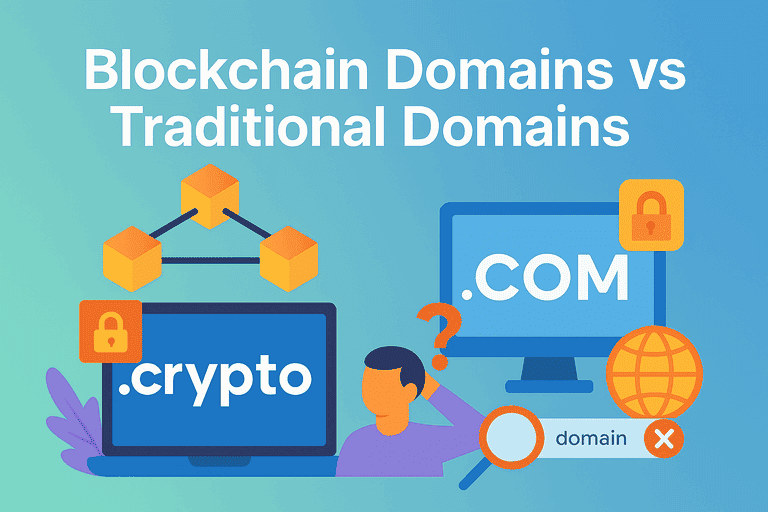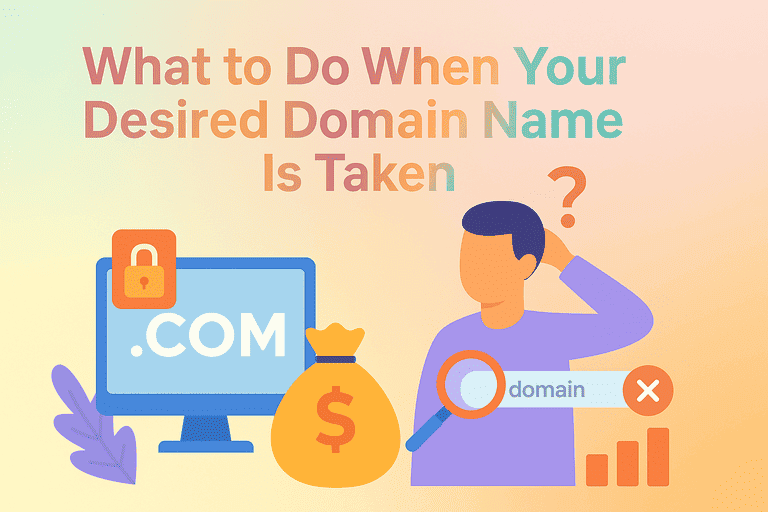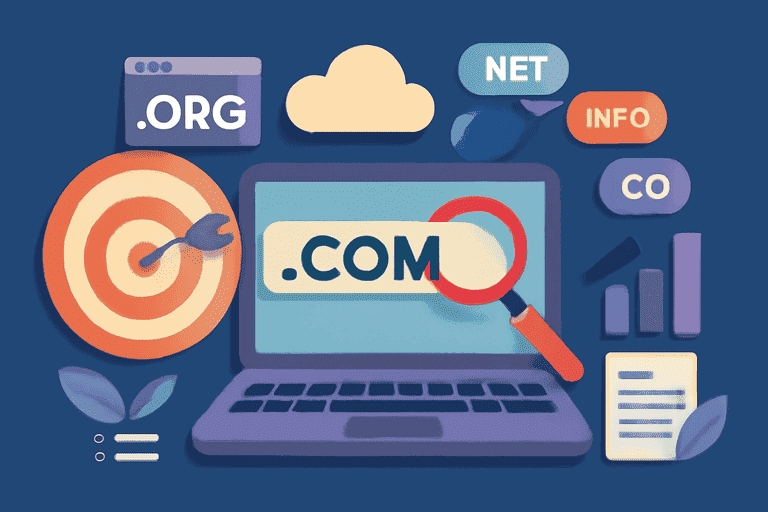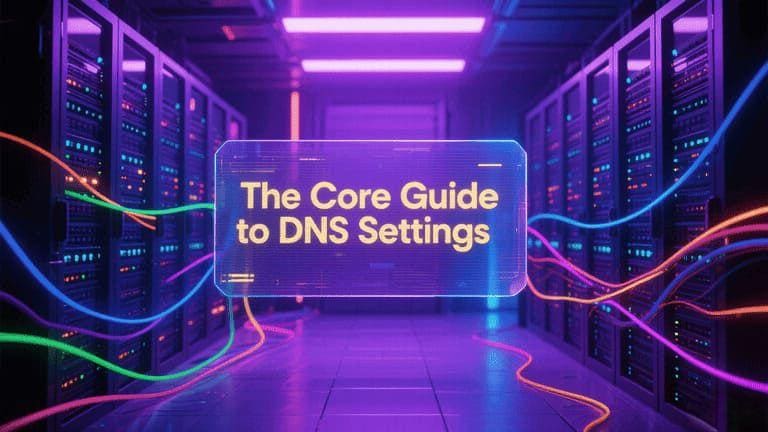In the vast expanse of the internet, a domain name serves as the unique “address” for every website. The suffix at the very end of the domain name, known as the Top-Level Domain (TLD), is a critical component of this digital identity. From the universally recognized .com to the geographically specific .cn and .jp, and on to the creative and individualistic .xyz and .app, the vibrant spectrum of TLDs forms a diverse system of online identification. Understanding their history, purpose, and unique characteristics is key to choosing the perfect digital address for yourself or your business.
1. Generic Top-Level Domains (gTLDs): The History of .com, .net, and .org
Generic Top-Level Domains (gTLDs) were the first type of domain suffix to be established and remain the most well-known. They were initially created to categorize websites based on their intended purpose.
.com(Commercial): As one of the original gTLDs,.comwas initially intended for commercial entities. However, its simplicity, ease of recall, and open registration policy allowed it to quickly transcend this initial scope. It has since become the most widely used and recognized TLD globally, virtually synonymous with the internet itself. For large multinational corporations and personal blogs alike,.comis the default choice, commanding the highest level of trust and recognition..net(Network): Created alongside.com,.netwas originally designated for organizations involved in network technologies, such as internet service providers and infrastructure companies. Over time, like.com, its registration restrictions loosened. It has become a popular choice for tech companies, startups, and any entity wishing to project a technologically savvy image. It often serves as the strongest alternative when the desired.comdomain is already taken..org(Organization): The.orgTLD was established for non-profit organizations. It inherently carries an aura of public service, credibility, and authority. Although registration is now open to all,.orgremains the premier choice for non-profits, non-governmental organizations (NGOs), open-source projects, and educational institutions, effectively communicating their non-commercial nature.
The evolution of these three foundational gTLDs mirrors the internet’s own journey from a specialized tool to a global, public utility. Their historical significance and widespread recognition ensure they maintain a central role in the domain landscape today.
2. Country Code Top-Level Domains (ccTLDs): A Nation’s Digital Calling Card like .cn, .jp, .us
In contrast to the “generic” nature of gTLDs, Country Code Top-Level Domains (ccTLDs) are assigned to specific countries or territories. These two-letter domains, based on the ISO 3166-1 country codes, serve as a nation’s unique identifier in the digital realm.
.cn(China): As the ccTLD for China,.cnhas experienced explosive growth, becoming one of the most registered ccTLDs globally. For businesses targeting the Chinese market, using a.cndomain not only signals localization but also builds trust and credibility with local consumers. Furthermore, it can contribute to better search engine rankings within China..jp(Japan): The.jpdomain is the official TLD for Japan and a symbol of identity for Japanese businesses and organizations. Registering a.jpdomain is a crucial step in a localization strategy for any company looking to establish a brand presence and conduct business in Japan, effectively bridging the gap with local users..us(United States): While.comremains dominant in the United States, the.usccTLD provides a clear and patriotic option for American individuals, businesses, and government entities wishing to emphasize their national identity.
ccTLDs are vital tools for globalization and localization. Choosing the ccTLD of a target market sends a clear message: “We are here, and we are here to serve you.”
3. New Generic Top-Level Domains (New gTLDs): Showcasing Personality and Creativity with .xyz, .top, .app
As the internet grew, the availability of desirable names within traditional gTLDs became increasingly scarce. To meet the rising demand and offer more descriptive and diverse options, the Internet Corporation for Assigned Names and Numbers (ICANN) launched the New gTLD Program in 2012. This initiative introduced hundreds of new suffixes, dramatically expanding the palette of domain choices.
.xyz: As a simple, memorable, and highly versatile suffix,.xyzgained significant attention, famously adopted by Google’s parent company, Alphabet (abc.xyz). It breaks free from industry constraints and is suitable for any type of website, offering a fresh and creative option for the next generation of internet users..top: With its positive connotations of excellence and leadership, the.topdomain appeals to businesses and individuals who strive to be leaders in their field and want their digital address to reflect that ambition..app: For mobile application developers and tech companies,.appis arguably one of the most relevant and attractive TLDs. It directly communicates the website’s purpose—to showcase, promote, and serve as a download hub for an application.
Beyond these examples, there are hundreds of other New gTLDs like .shop, .blog, .guru, and .city. These suffixes can signify an industry, a passion, or a profession, providing unprecedented opportunities to create a unique and highly relevant online identity.
4. How to Choose the Best Domain Suffix for You
Faced with a dizzying array of choices, how do you select the perfect TLD? Consider the following factors:
- Define Your Website’s Purpose and Audience:
- Commercial Business:
.comremains the gold standard due to its universal recognition and trust. If your.comis taken, consider.net,.co, or an industry-specific New gTLD like.storeor.shop. - Non-Profit Organization:
.orgis the ideal choice to clearly convey your non-commercial mission. - Tech Company: Suffixes like
.net,.io, or.techeffectively highlight your focus on technology. - Local Business: If your operations are focused on a specific country, using its ccTLD (e.g.,
.cn,.de,.ca) is a smart move to build local trust and gain SEO advantages. - Personal Branding: New gTLDs offer a canvas for creativity. Use
.meor.liveto express personality, or.art,.design, or.phototo showcase your professional skills.
- Commercial Business:
- Keep it Simple and Memorable: Regardless of the suffix, ensure the full domain name is short, easy to spell, and easy to remember. This makes it easier for users to find you and share your address with others.
- Consider Brand Protection: For businesses, it’s wise to register your core brand name across multiple key TLDs (
.com,.net, your primary ccTLD) even if you only plan to use one. This prevents competitors or cybersquatters from acquiring them and protects your brand equity. - Think Outside the Box: Don’t feel confined to traditional choices. A creative and descriptive New gTLD can often make your website stand out and capture a user’s attention more effectively than a traditional TLD.
From the classic .com to the boundless possibilities of New gTLDs, the world of domain suffixes has never been more diverse. They are more than just technical pointers; they are an extension of your brand story, cultural identity, and creative expression. By carefully selecting the suffix that best fits your vision, you choose the perfect “front door” for your digital home, setting the stage for your journey in the online world.










